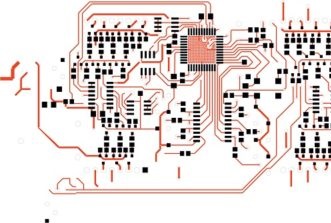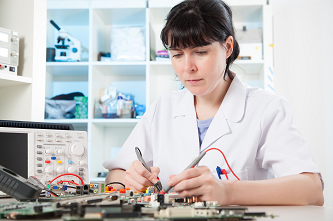This website uses cookies so that we can provide you with the best user experience possible. Cookie information is stored in your browser and performs functions such as recognising you when you return to our website and helping our team to understand which sections of the website you find most interesting and useful.
FPGA Synthesizer
24/02/2021, hardwarebee
FPGA synthesizers have become quite critical and central in the world of music production. They offer a lot of flexibility and enable you to control and combine various musical components with ease. Modern day synthesizers are even more advanced when compared to conventional, basic synthesizers, producing smooth analog waves and offering a lot of precision and quality.
Unfortunately, it is not possible to attain that degree of quality and precision with simple microprocessors. The abilities of modern synthesizers far exceed the maximum capacity of what these microprocessors can potentially provide. That is where FPGAs come in.
What are Synthesizers?
Synthesizers are tools that are used to combine various sound bits and components to create electronic music. There are essentially two types of synthesizers: hardware and software. Hardware synthesizers are physical tools that have a fixed method etched onto their tangible hardware. This governess how they produce sounds. Software synthesizers work with the help of software tools like MAX and CPS. This makes them much more flexible to use thanks to the superior computational power.
Why Do We Need FPGA Synthesizers?
As mentioned before, microcontrollers do not have the capacity to account for and support the capabilities that modern synthesizers are expected to have. The clock speed is simply not sufficient. FPGAs, on the other hand, enable you to design and execute circuits that can process these waves efficiently. Considering the highly customizable nature of FPGAs, you can design highly complex and intricate circuits that can perform advanced tasks. So, this kind of technology is essentially enabling you to build very specific, customized chips whose purpose is to perform FP synthesis. Such a highly targeted approach ensures top notch results and high-quality synthesis products.
How are FPGAs Used in Synthesizers?
FPGAs, in this context, are essentially used to build hardware accelerators. In such a circuit, you would use a combination of various modules including oscillators, amplifiers, and envelope generators. Additionally, it is also possible for you to mount several different modules and configurations onto a single FPGA chip. As a result, using FPGAs for these circuits enables you to make high performance synthesizers that are extremely capable and equally as portable. Complex chords are produced by combining individual waveforms together through the use of some basic modules.
Frequency modulation can be performed if concerned about the sound quality. Higher frequencies and higher order filters help improve the sound quality. An envelope generator, on the other hand, allows you to give your volume time variance. This means that you can adjust your volume by however many levels depending on your configuration for the envelope generator.
Lastly, another factor that is produced by the FPGA is the timbre. FPGAs offer an increase in the timbre freedom because the individual, small circuits on the chip produce arbitrary signal waveforms. The FPGA combines the use of components such as the oscillator, the voltage filter, the envelope generator, and the amplifier to produce various kinds of timbres.










